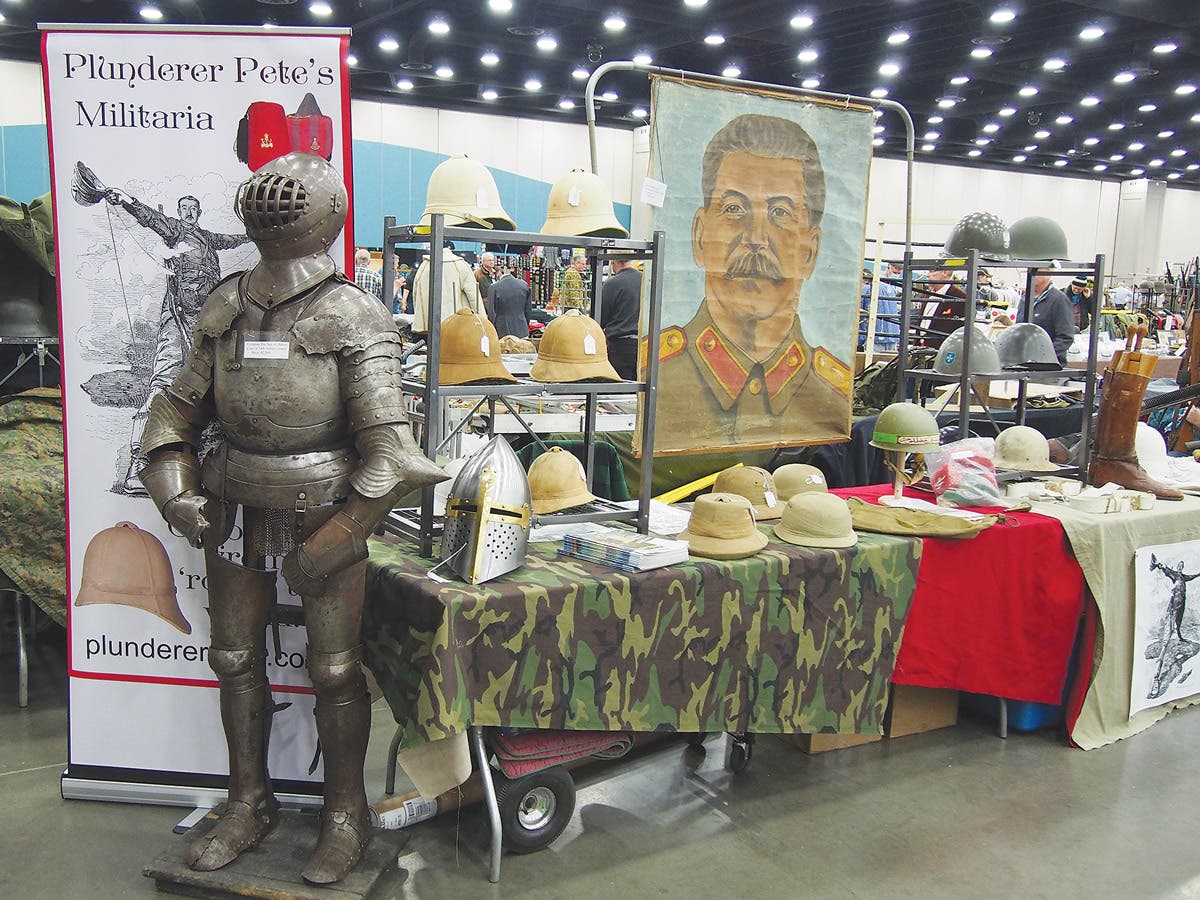Books in Brief: The Collector’s Guide to Hitler Youth Knives Vol. I & II
Military Trader reviews “the Collector’s Guide to Hitler Youth Knives Vol. I & II”
The Collector’s Guide to Hitler Youth Knives Vol. I & II
Publisher: “LST Publishing” (self published)
Over 800 pages, thousands of photos and about 500 knives surveyed.
Author: Nathan Hogle
Contact Info: nathan@lakesidetrader.com, nathanphogle@gmail.com
Introduced in 1933, the Hitler Youth rally knife (Fahrtenmesser) was the first “Nazi dagger.” A handsome object, it resembled the WWI-Weimar officer’s dress bayonet (Extra Seitengewehr), and certain imperial German trench knives. It also foreshadowed the similar, adult-sized Wehrmacht dress bayonet. Of course it was coveted. Millions of boys had to have their own.
Author Nathan Hogle documents how the ceremonial knife came to be, its ideological underpinnings and award qualifications, changes over time, variations and much more.
His two-volume set is advertised as a “collectors’ guide” and it certainly is that, in spades. But this descriptor seems too modest. Exclaimed edged weapons authority Tom Wittmann, “this isn’t a book, it’s an encyclopedia!” Which is to say Hogle’s treatment is mammoth and unprecedented, remarkable for attention to detail and thousands of mostly-color photos.
Some 500 ‘messers, the author’s and others’ are on view, each with precise dimensions for every part, all metals and other materials used (including the final ones’ plastic belt loops), blade etch templates and scabbard finishes. As well, manufacturing techniques and metallurgy during different periods are neatly touched on; in fact, every trait from earliest 1933, to mid-period, to late 1941 is covered.
Joining the fulsome specs and shed-loads of images are interesting mini-histories of makers familiar and obscure, promotional ads, addresses etc. Additionally, Hogle reproduces some official orders and regulations. Prewar/early makers’ logos and known RZM codes are extensively probed and chronicled, too. That alone is valuable, as tallying codes with makers can be exhausting. (The exception being transitional knives carrying both RZM numbers/dates and the maker name and trademark.) In the way of high-quality medal or badge references, the author not only tallies data-points for you, he minutely records flaws in die-stampings. Diligence on all such vital “tells” is outstanding.
HJ Fuehrerdolch, or “Leaders’ Dagger” also gets more than a passing nod. These resemble the camp knife not at all, and definitely not in numbers made or monetary value. Originals are quite scarce, desirable and sell for $3000-$5000 – not counting hangers, fancy cases, tags etc. Even replicas may fetch $700-800.
So we’re talking for the most part about representative examples of several dozen knife makers, all with markings and variations down to the grip-rivet, HY emblem and scabbard runner level. And a note on the high-resolution photography: they’re mostly excellent or very good; and besides full-ons you get birds’ eye views where needed. Also illustrated for context are rare period photos. This is a soup-to-nuts banquet. And, Hogle seems to say, it’s about time the community partake. Too right. Underscoring this is a sad picture in situ of a J knife on some ancient windowsill, covered in cobwebs and schmutz. It’s doubtless far from alone.
For decades postwar, like bayonets generally, youth knives were the blade hobby’s poor relation -- widely shunned in favor of dress daggers per se. Or, dropped in the trade bin for some unlikely future deal. A lot ended up in toolboxes or fishing vest pockets.
Not only wasn’t the design especially eye-catching; most souvenired by vets were quite beat. But what did a collector expect? These were carried by boys. And, highly regimented little fellows or not, off-duty they got in a lot of mischief: dueling with the knives like knights of old, digging around the camp site for dropped change or fishing worms, throwing into trees (per a candid photo here), pounding nails, carving tent pegs, sharpening the heck out of them.
Anyhow these modest belt knives have come a good ways. People are slowly awakening to their significance. Articles are published, and well thought-out topic threads appear in forums. Another, albeit regrettable sign of interest is the increasing numbers of outright fakes or ginned-up (hence ruined) originals going around.
Which is interesting, since an average example doesn’t cost a king’s ransom: $200-400 gets you in the door. And if you’re thinking about German bladery the ‘messers are a good gateway type – like, say, well preserved Japanese bayonets or GI fighting knives. Very clean, pre-RZM or rare-maker examples range from hard to near impossible to find -- and worth more than you think.
Only don’t think too long. These references, like all good militaria references are prompting attention. This will snowball. Then, you can be sure the price of admission will rise. The “eye candy” and word-of-mouth factors are strong.
Buyers just mind how you go. Hogle’s view, clarified in his thoughtful forward, is that details which seem irrelevant may be the most important. There’s for sure a surfeit of bad but tempting knives. Neither is the number of fraudsters and “but I didn’t know!” vendors small. Collectors and museum curators, archivists and generalist knife collectors need something comprehensive. Hogle gives it to them.
In sum, this large, comprehensive set is an exemplar -- the first devoted solely to the HJ knife. First-rate research study.
*As an Amazon Associate, Military Trader / Military Vehicles earns from qualifying purchases.







